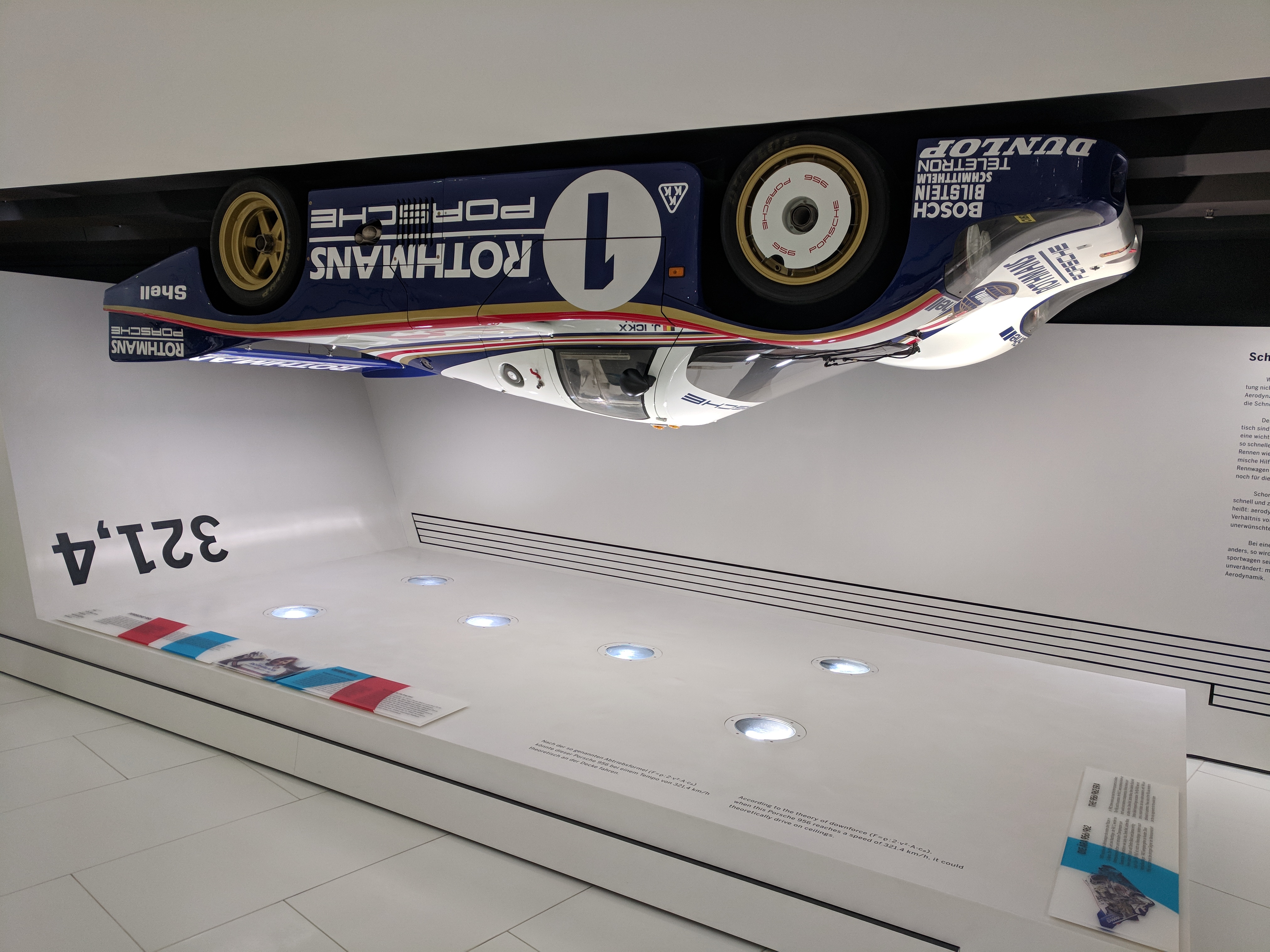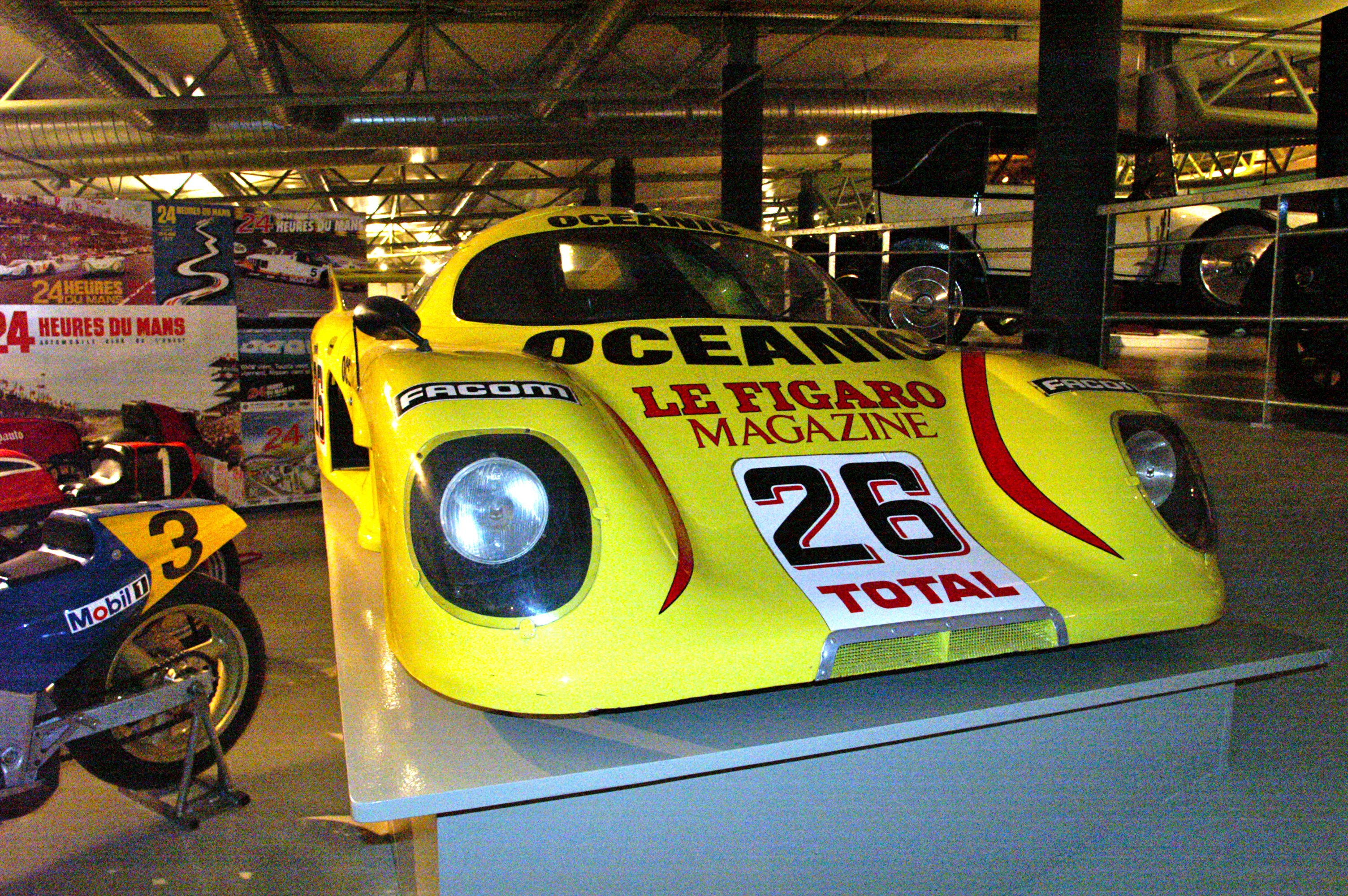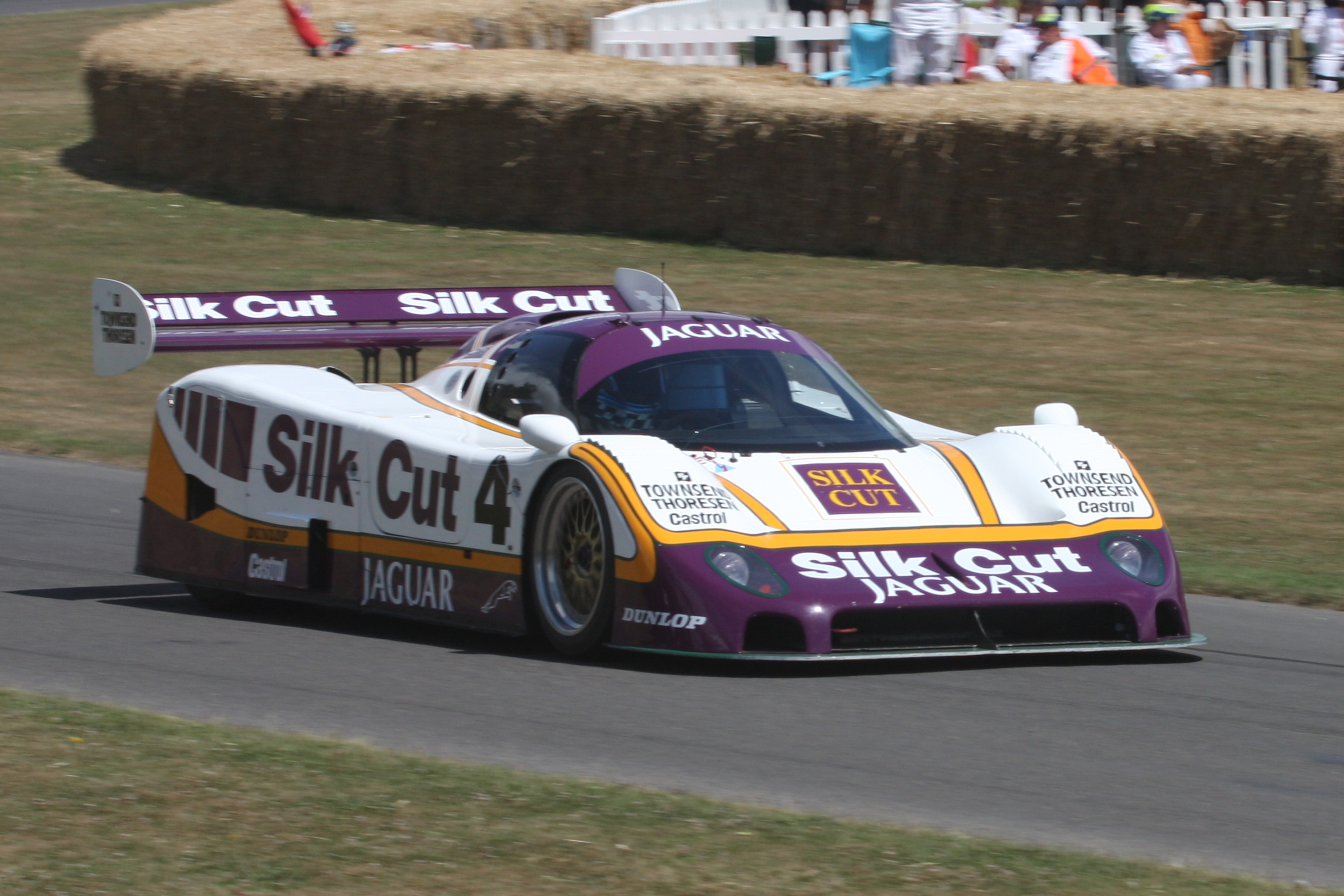|
Rondeau M482
The Rondeau M482 was a Group C sports car prototype, designed, developed and built by Automobiles Jean Rondeau in 1982, and used in sports car racing until 1987. Development history and technology In 1982, a team of engineers led by Jean Rondeau developed the first true Group C Rondeau, the M482. The previous model, the M382, was largely based on the most successful Rondeau type, the M379. While Don Foster designed a new chassis, the French racing car designer and aerodynamicist Max Sardou designed a very round, almost voluminous body. A special feature of the racing car was the rear. In a so-called Venturi channel, the Venturi effect should use to provide more downforce on the rear axle. As innovative as the car seemed at first glance, it was badly designed. In order to make the large tunnel possible, the exhaust pipe was routed past the radiators on the left and right of the car. Due to this design, the function of the cooler was largely restricted, which led to constant over ... [...More Info...] [...Related Items...] OR: [Wikipedia] [Google] [Baidu] |
Rondeau M382
The Rondeau M382 was a Group C prototype sports car, designed, developed and built by Automobiles Jean Rondeau in 1981, and used in sports car racing between 1982 and 1986. Development history and technology Developed under the leadership of the French racing driver and racing car designer, the M382 was the first Rondeau to comply with the Group C technical regulations that came into force in 1982. Nevertheless, the M382 was largely based on the most successful Rondeau to date, the M379 model, with which Jean Rondeau was able to win the 1980 24 Hours of Le Mans together with Jean-Pierre Jaussaud. This was mainly for financial reasons, since the small racing team from France always had to budget with the financial means. The situation was made easier in autumn 1981 by the conclusion of purchase contracts for three chassis, which were delivered to three customer teams at the beginning of 1982. Unlike the M379, the M382 had a longer wheelbase, new rear suspension, larger front, an ... [...More Info...] [...Related Items...] OR: [Wikipedia] [Google] [Baidu] |
Cosworth DFL
The DFV is an internal combustion engine that was originally produced by Cosworth for Formula One motor racing. The name is an abbreviation of ''Double Four Valve'', the engine being a V8 development of the earlier four-cylinder FVA, which had four valves per cylinder. Its development in 1967 for Colin Chapman's Team Lotus was sponsored and funded by major American automotive manufacturer Ford. For many years it was the dominant engine in Formula One, with the whole engine program funded by Ford's European division, Ford Europe and engines badged as "Ford" for Formula One championship races. DFVs were widely available from the late 1960s to the mid 1980s and were used by every specialist team in F1 during this period with the exception of Ferrari, Alfa Romeo, Renault, BRM and Matra, who all designed, produced and ran their own engines. Variants of this engine were also used in other categories of racing, including CART, Formula 3000 and sports car racing. The engine is a 90°, 2 ... [...More Info...] [...Related Items...] OR: [Wikipedia] [Google] [Baidu] |
Porsche 962
The Porsche 962 (also known as the 962C in its Group C form) is a sports-prototype racing car built by Porsche as a replacement for the 956 and designed mainly to comply with IMSA's GTP regulations, although it would later compete in the European Group C formula as the 956 had. The 962 was introduced at the end of 1984, from which it quickly became successful through private owners while having a remarkably long-lived career, with some examples still proving competitive into the mid-1990s. The vehicle was later replaced by the Porsche WSC-95. Development When the Porsche 956 was developed in late 1981, the intention of Porsche was to run the car in both the World Sportscar Championship and the North American IMSA GTP Championship. However IMSA GTP regulations differed from Group C and subsequently the 956 was banned in the US series on safety grounds as the driver's feet were ahead of the front axle center line. To make the 956 eligible under the new IMSA regulations, Por ... [...More Info...] [...Related Items...] OR: [Wikipedia] [Google] [Baidu] |
Ford Motor Company
Ford Motor Company (commonly known as Ford) is an American multinational automobile manufacturer headquartered in Dearborn, Michigan, United States. It was founded by Henry Ford and incorporated on June 16, 1903. The company sells automobiles and commercial vehicles under the Ford brand, and luxury cars under its Lincoln luxury brand. Ford also owns Brazilian SUV manufacturer Troller, an 8% stake in Aston Martin of the United Kingdom and a 32% stake in China's Jiangling Motors. It also has joint ventures in China (Changan Ford), Taiwan (Ford Lio Ho), Thailand ( AutoAlliance Thailand), and Turkey ( Ford Otosan). The company is listed on the New York Stock Exchange and is controlled by the Ford family; they have minority ownership but the majority of the voting power. Ford introduced methods for large-scale manufacturing of cars and large-scale management of an industrial workforce using elaborately engineered manufacturing sequences typified by moving assembly lines; by ... [...More Info...] [...Related Items...] OR: [Wikipedia] [Google] [Baidu] |
Thierry Boutsen
Thierry Marc Boutsen (born 13 July 1957) is a Belgian former racing driver who raced for the Arrows, Benetton, Williams, Ligier and Jordan teams in Formula One. He competed in 164 World Championship Grands Prix (163 starts), winning three races, achieving 15 podiums and scoring 132 career points. His best finish in the World Drivers' Championship was fourth in whilst driving for Benetton. He also twice finished second in the 24 Hours of Le Mans sportscar race (in in a Peugeot 905 and in in a Porsche 911 GT1). Career Junior formulae and sportscars After winning the "Volant V" in 1977 at the André Pilette Racing School, Zolder, Boutsen entered the Belgian Formula Ford 1600 championship and won it in 1978 with 15 victories in 18 races. He also entered the 1978 Spa 24 Hours race, the last auto race on the old 14 km (8.7 mi) Spa-Francorchamps circuit- driving a Toyota Trueno. For 1979 he moved to Formula 3, winning three races in 1980 and second place in the Europe ... [...More Info...] [...Related Items...] OR: [Wikipedia] [Google] [Baidu] |
1983 24 Hours Of Le Mans
The year 1983 saw both the official beginning of the Internet and the first mobile cellular telephone call. Events January * January 1 – The migration of the ARPANET to TCP/IP is officially completed (this is considered to be the beginning of the true Internet). * January 24 – Twenty-five members of the Red Brigades are sentenced to life imprisonment for the 1978 murder of Italian politician Aldo Moro. * January 25 ** High-ranking Nazi war criminal Klaus Barbie is arrested in Bolivia. ** IRAS is launched from Vandenberg AFB, to conduct the world's first all-sky infrared survey from space. February * February 2 – Giovanni Vigliotto goes on trial on charges of polygamy involving 105 women. * February 3 – Prime Minister of Australia Malcolm Fraser is granted a double dissolution of both houses of parliament, for elections on March 5, 1983. As Fraser is being granted the dissolution, Bill Hayden resigns as leader of the Australian Labor Party, and in the subsequent lea ... [...More Info...] [...Related Items...] OR: [Wikipedia] [Google] [Baidu] |
Porsche 956
The Porsche 956 was a Group C sports-prototype racing car designed by Norbert Singer and built by Porsche in 1982 for the FIA World Sportscar Championship. It was later upgraded to the 956B in 1984. In 1983, driven by Stefan Bellof, this car established a record that would stand for 35 years, lapping the famed 20.832 km (12.93 mi) Nürburgring Nordschleife in 6:11.13 during qualifying for the 1000 km Sports Car race. The record was finally surpassed by Timo Bernhard in a derestricted Porsche 919 Evo on 29 June 2018. Development Built to comply with the championship's new Group C regulations which were introduced in 1982, the car was a replacement for Porsche's successful 936 model which competed in the previous Group 6 category of the World Championship. The project began in June 1981, and the first prototype chassis was completed on March 27, 1982, in time for the beginning of the World Championship season. Jürgen Barth tested the first chassis at Porsche's pri ... [...More Info...] [...Related Items...] OR: [Wikipedia] [Google] [Baidu] |
François Migault
François Migault (4 December 1944 – 29 January 2012) was a racing driver from Le Mans, France. He participated in 16 Formula One World Championship Grands Prix, debuting on 13 August 1972, but scored no championship points. Career A native of Le Mans, he also entered the 24 Hours of Le Mans race 25 times, between 1972 and 2002. Migault's first attempt in Formula One in was with the small, underfunded Connew team that managed to start in only one race. In , he drove almost a complete season with British Racing Motors after both BRM drivers of 1973, Niki Lauda and Clay Regazzoni, had moved to Ferrari. In , a few races with the ill-fated Embassy Hill team and Williams followed. In Formula Two that year, Migault achieved some success with an Osella FA2, scoring one point. Migault continued to compete at Le Mans until he was in his mid-fifties and achieved a best finish of second in 1976, together with two other podium finishes. Migault died on 29 January 2012 after a long ... [...More Info...] [...Related Items...] OR: [Wikipedia] [Google] [Baidu] |
Rondeau M379
The Rondeau M379 is a Group 6 sports prototype race car, designed, developed and built by Automobiles Jean Rondeau, and competed in sports car racing between 1979 and 1988. It also notably successfully won the 24 Hours of Le Mans in 1980. During the 1981 24 Hours of Le Mans, two cars finished on the podium, but the race was marred by the death of Jean-Louis Lafosse, driving one of the five M379s entered in the event. It achieved one further win, at Monza in 1988. It scored a total of five podium finishes, and three class wins. It was powered by a , , Ford-Cosworth DFV V8 Formula One engine.The chassis is an aluminum-reinforced steel spaceframe, covered in a fiberglass panel body. This drove the rear wheels through a Hewland 5-speed manual transmission. This meant it was very light, with the total weight coming to . Wins/Victories The car only shone at the 24 Hours of Le Mans and participated very little in other races. It was only with the next car, the Rondeau M382, that Jea ... [...More Info...] [...Related Items...] OR: [Wikipedia] [Google] [Baidu] |
V8 Engine
A V8 engine is an eight-cylinder piston engine in which two banks of four cylinders share a common crankshaft and are arranged in a V configuration. The first V8 engine was produced by the French Antoinette company in 1904, developed and used in cars and speedboats but primarily aircraft; while the American 1914–1935 ''Cadillac L-Head'' engine is considered the first road going V8 engine to be mass produced in significant quantities. The popularity of V8 engines in cars was greatly increased following the 1932 introduction of the ''Ford Flathead V8''. In the early 21st century, use of V8 engines in passenger vehicles declined as automobile manufacturers opted for more fuel efficient, lower capacity engines, or hybrid and electric drivetrains. Design V-angle The majority of V8 engines use a V-angle (the angle between the two banks of cylinders) of 90 degrees. This angle results in good engine balance, which results in low vibrations; however, the downside is a larg ... [...More Info...] [...Related Items...] OR: [Wikipedia] [Google] [Baidu] |
Sports Car Racing
Sports car racing is a form of motorsport road racing which utilises sports cars that have two seats and enclosed wheels. They may be purpose-built prototypes or grand tourers based on road-going models. Broadly speaking, sports car racing is one of the main types of circuit auto racing, alongside open-wheel single-seater racing (such as Formula One), touring car racing (such as the British Touring Car Championship, which is based on 'saloon cars' as opposed to the 'exotics' seen in sports cars) and stock car racing (such as NASCAR). Sports car races are often, though not always, endurance races that are run over relatively large distances, and there is usually a larger emphasis placed on the reliability and efficiency of the car as opposed to outright speed of the driver. The FIA World Endurance Championship is an example of a sports car racing series. A type of hybrid between the purism of open-wheelers and the familiarity of touring car racing, this style is often associate ... [...More Info...] [...Related Items...] OR: [Wikipedia] [Google] [Baidu] |
Sports Prototype
A sports prototype, sometimes referred to as simply a prototype, is a type of race car that is used in the highest-level categories of sports car racing. These purpose-built racing cars, unlike street-legal and production-based racing cars, are not intended for consumer purchase or production beyond that required to compete and win races. Prototype racing cars have competed in sports car racing since before World War II, but became the top echelon of sports cars in the 1960s as they began to replace homologated sports cars. Current ACO regulations allow most sports car series to use two forms of cars: grand tourers (GT), based on street cars, and prototypes, which are allowed a great amount of flexibility within set rule parameters. In historic racing, they are often called "sports racing cars". Sometimes, they are incorrectly referred to as "Le Mans cars", whether they are competing in the Le Mans race or not. Types of sports prototypes Since the 1960s, various championships ... [...More Info...] [...Related Items...] OR: [Wikipedia] [Google] [Baidu] |








